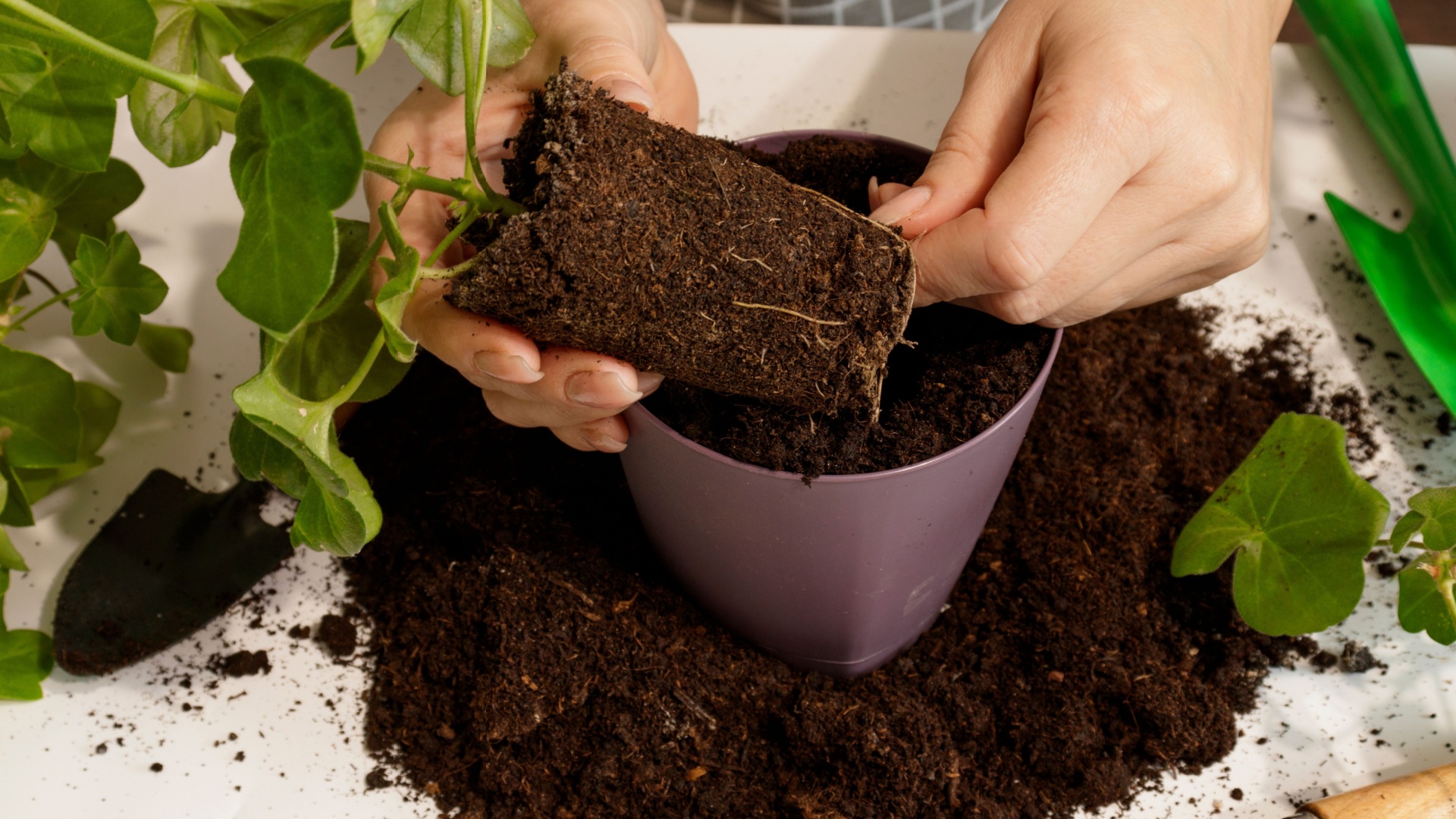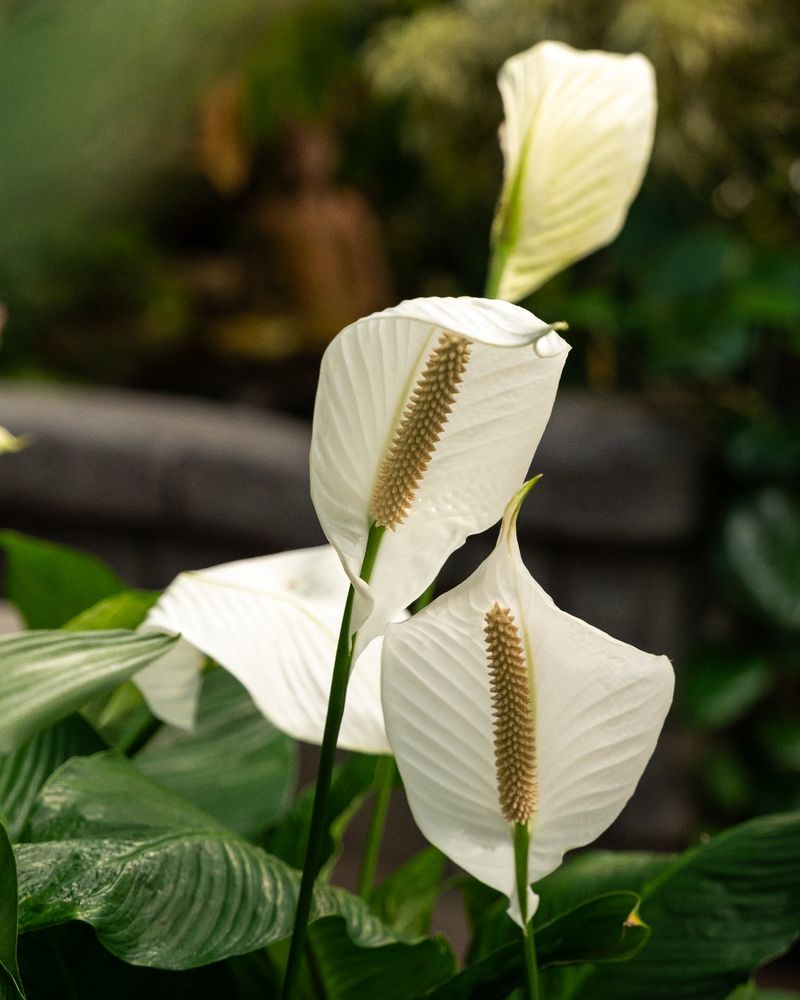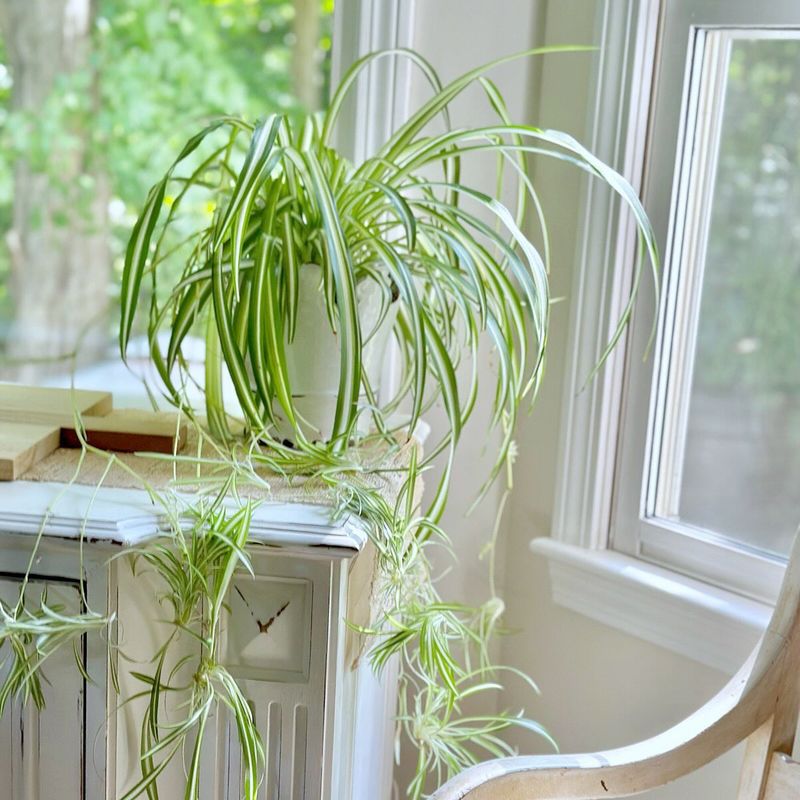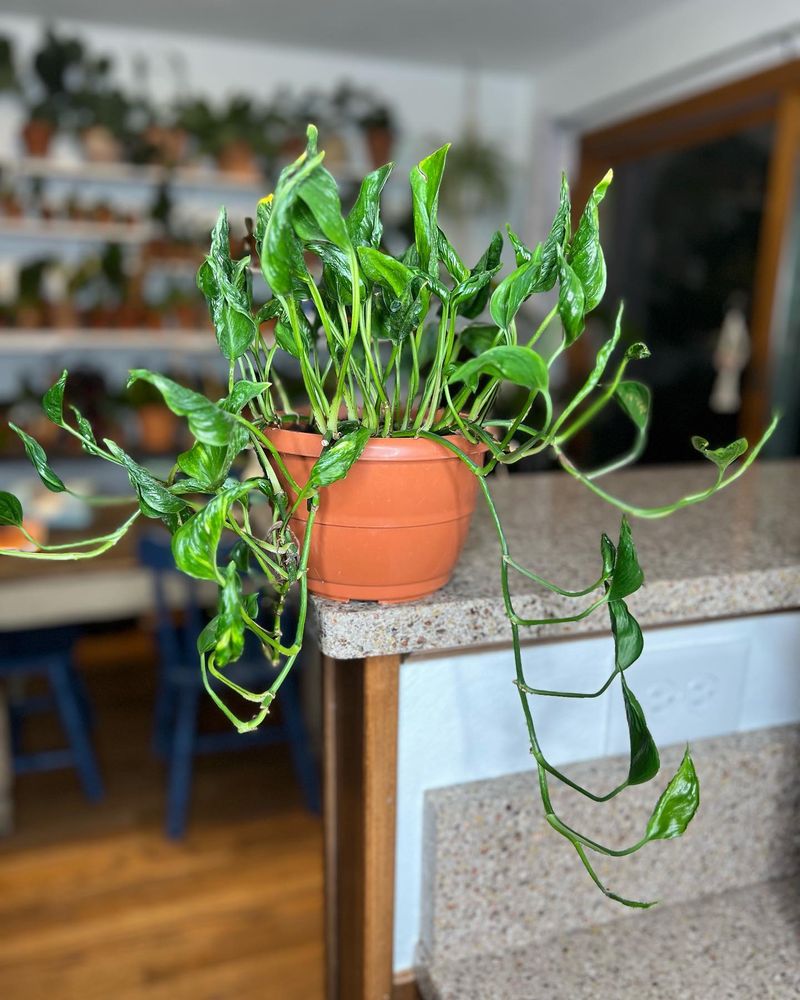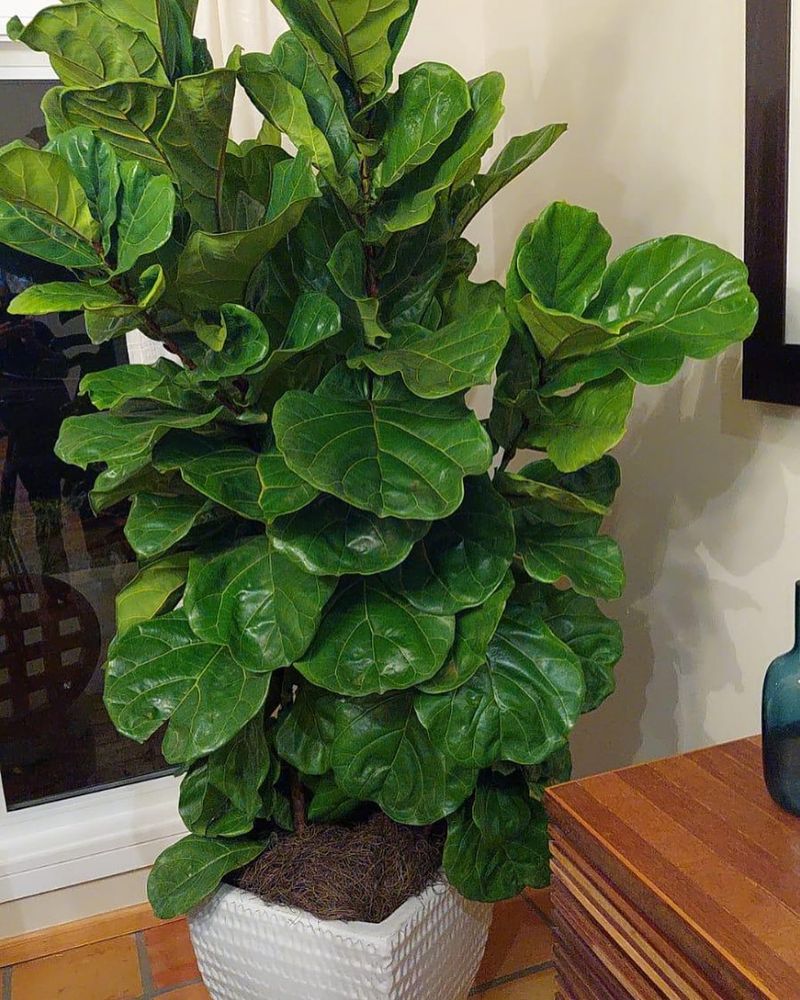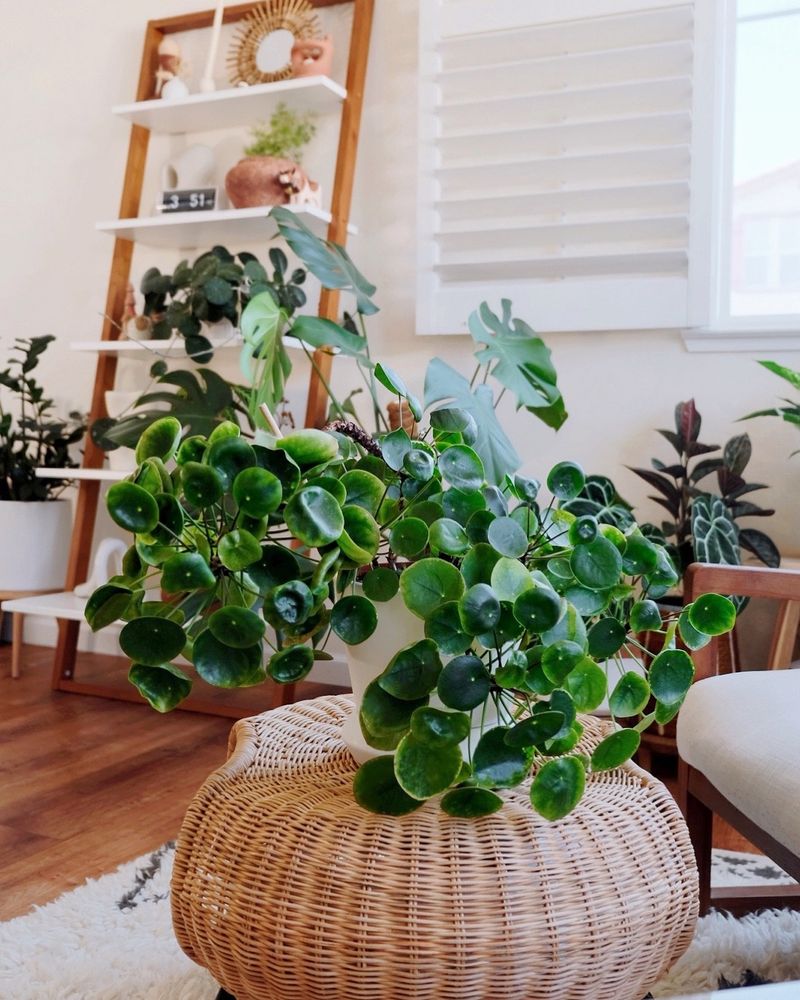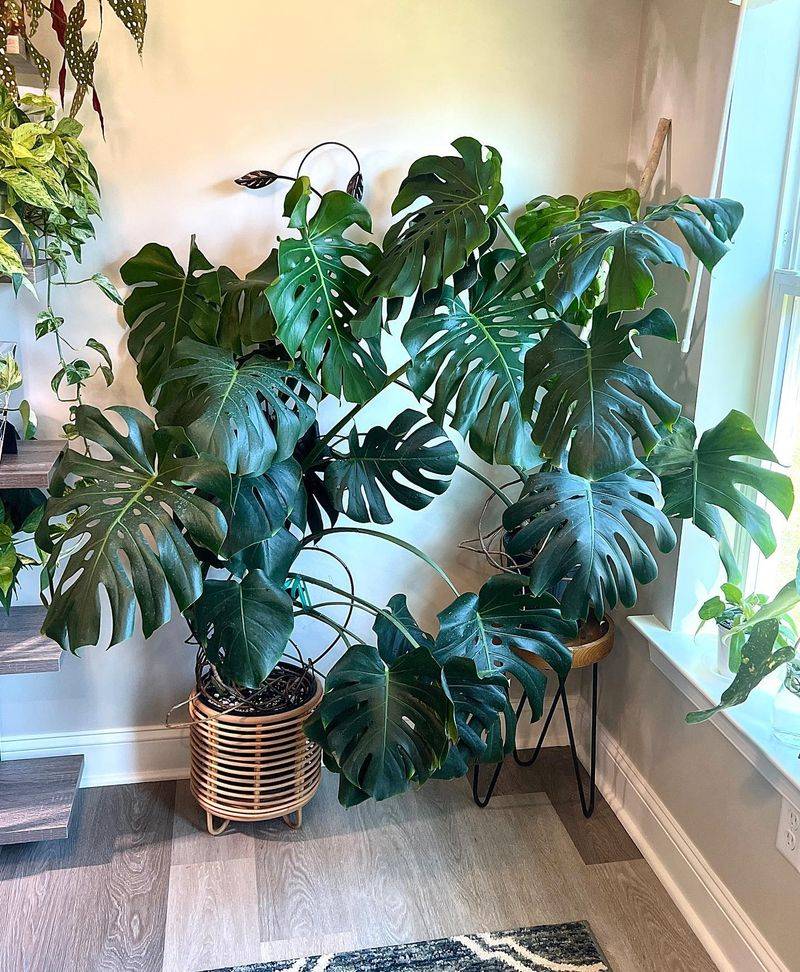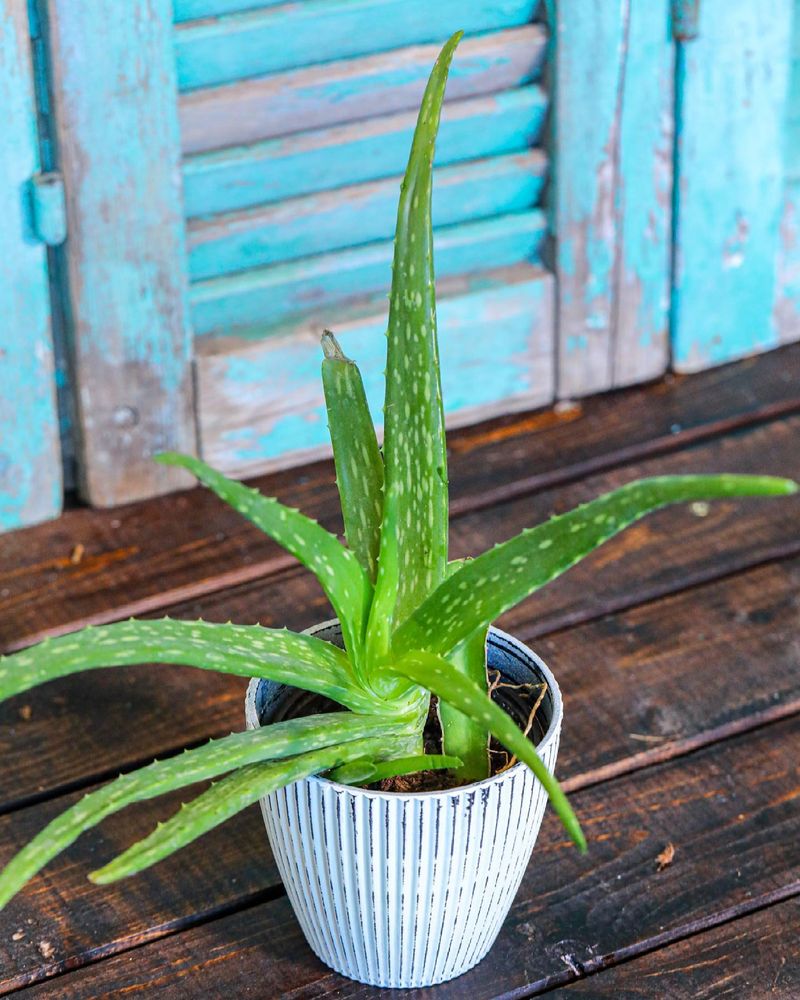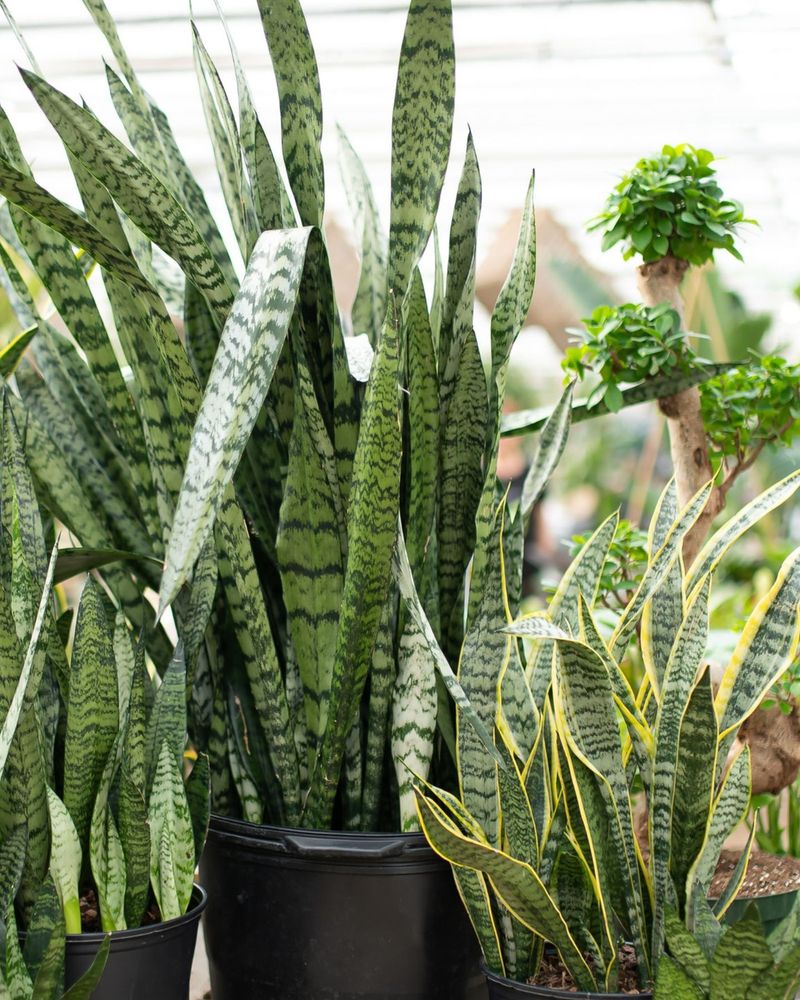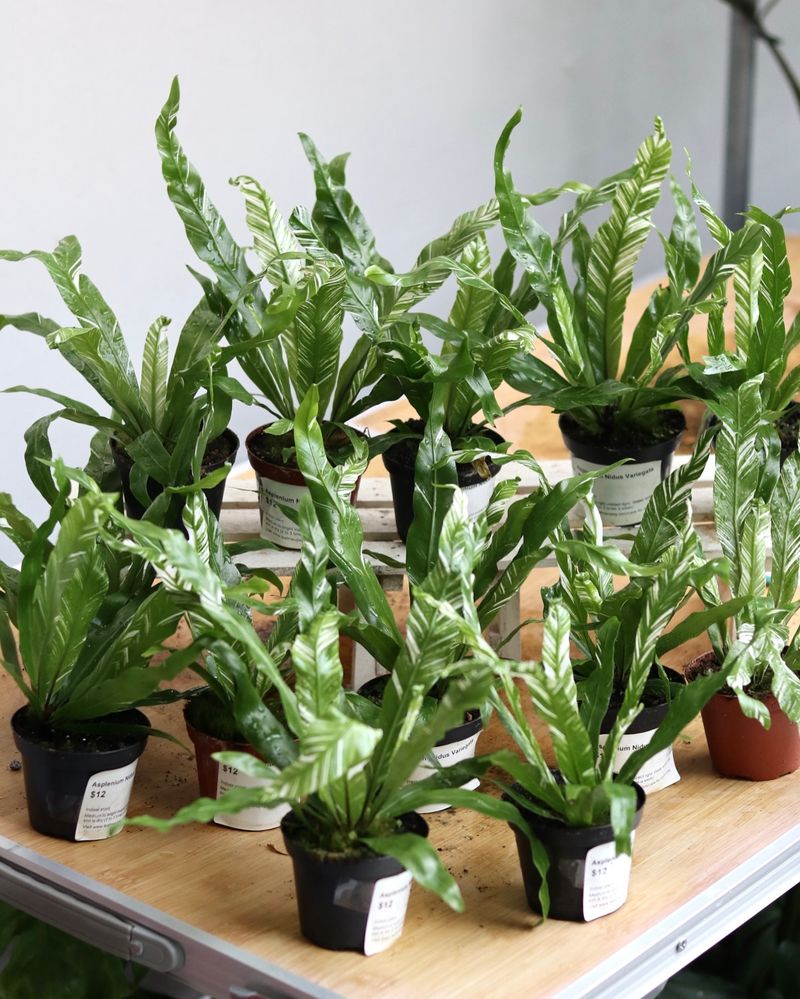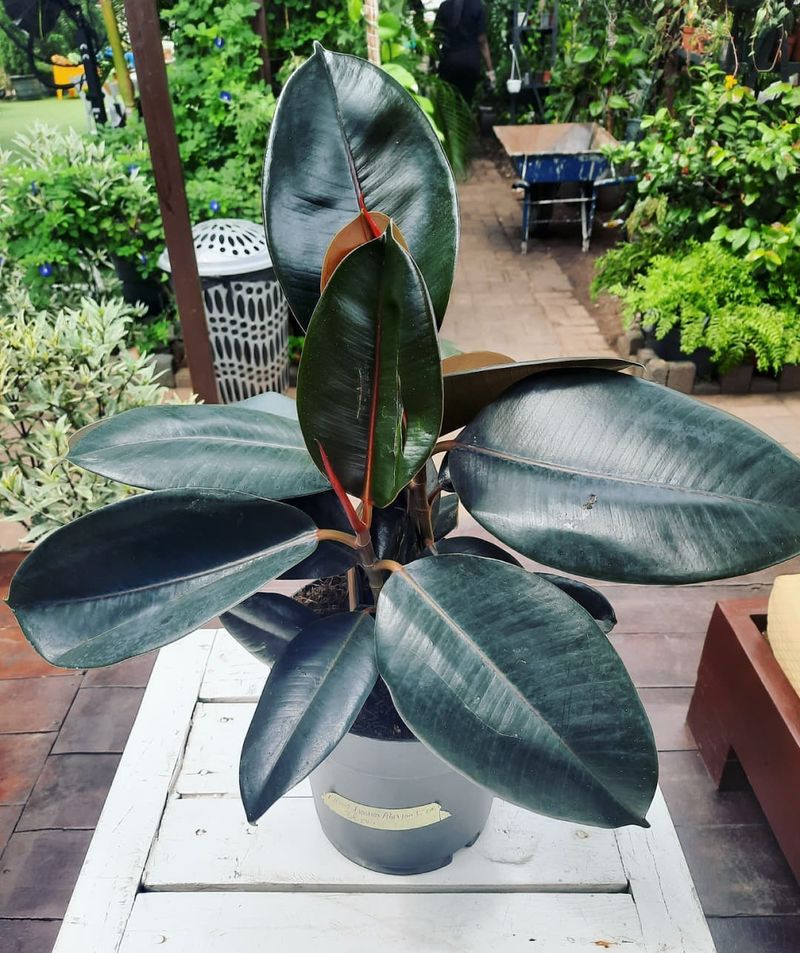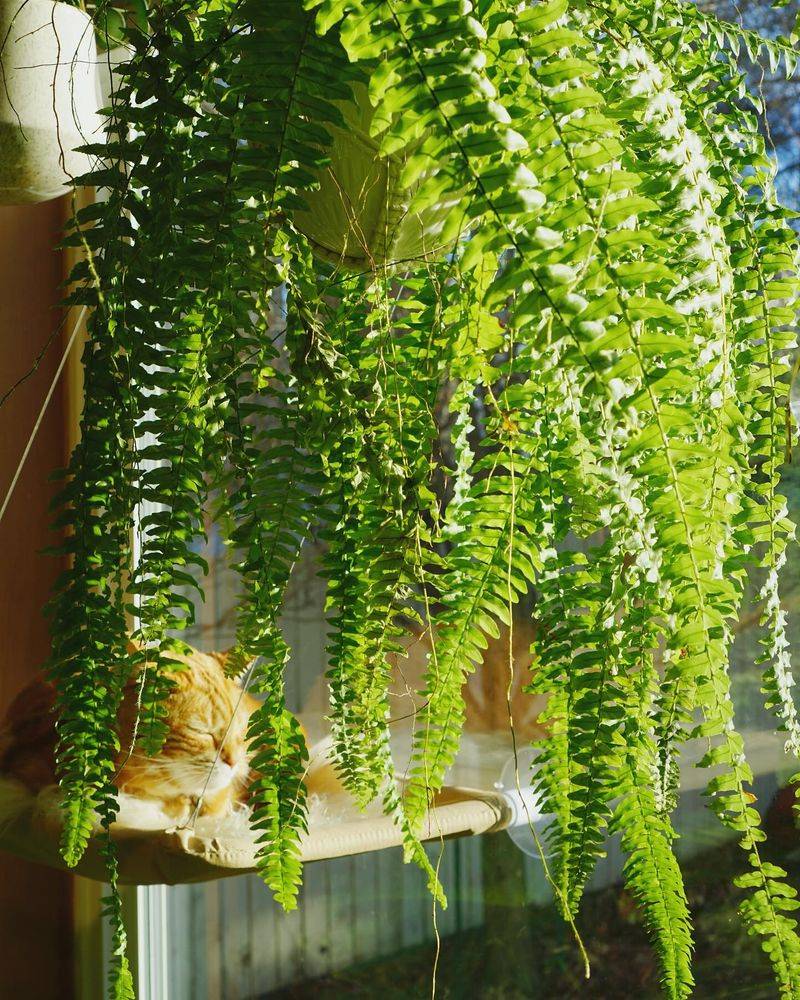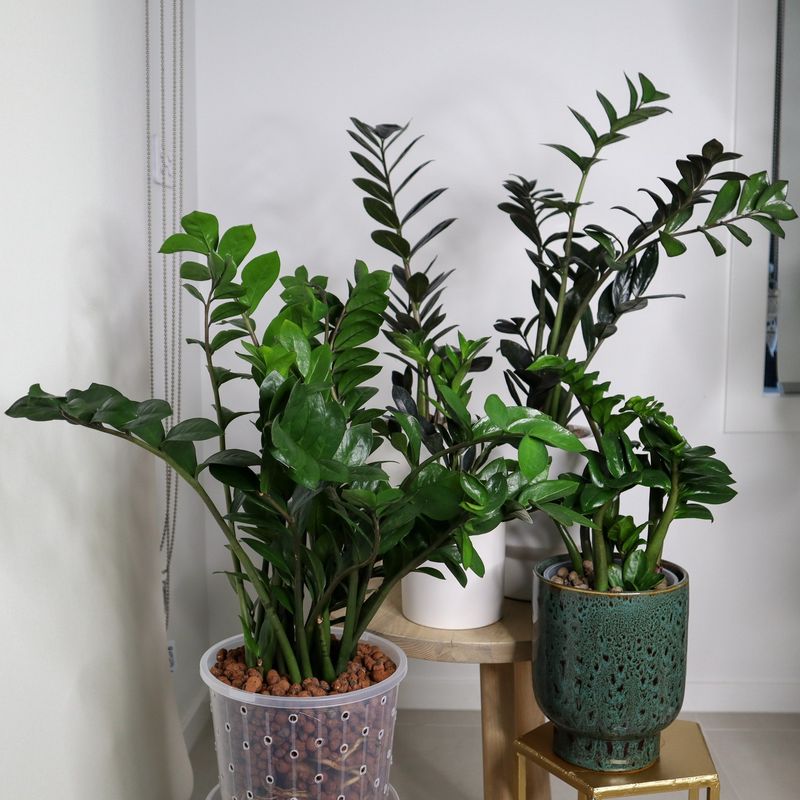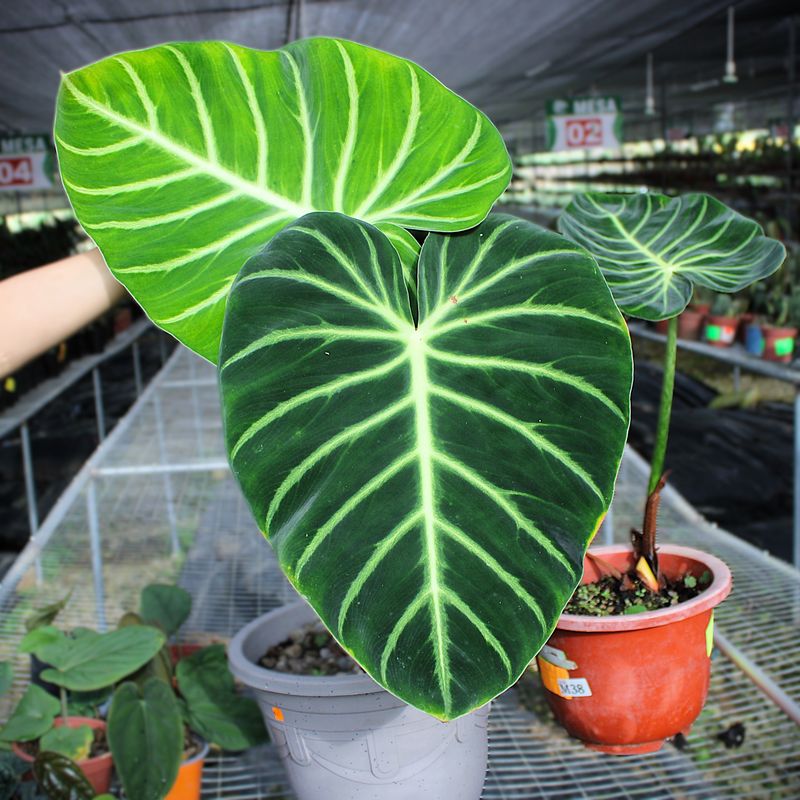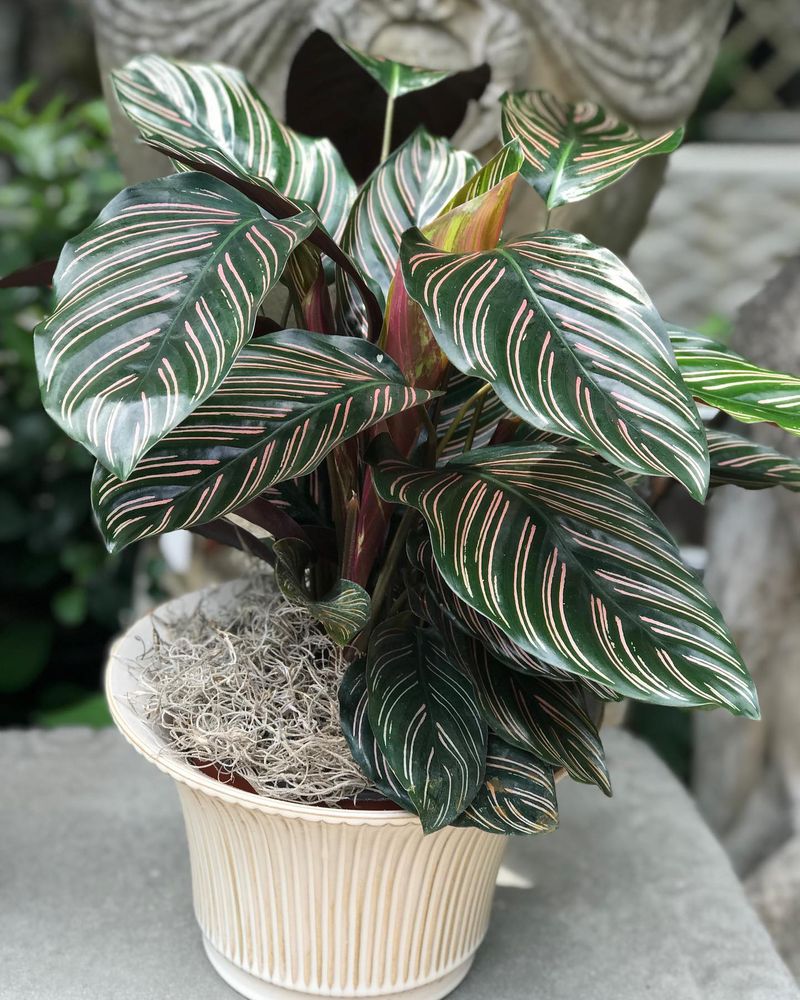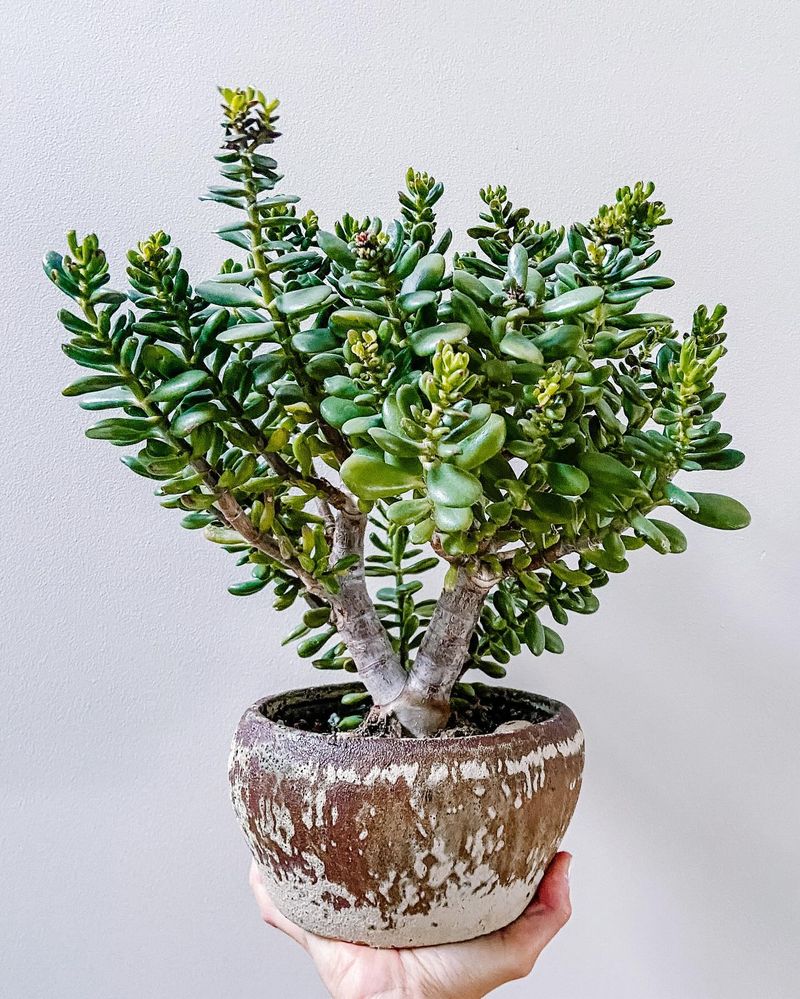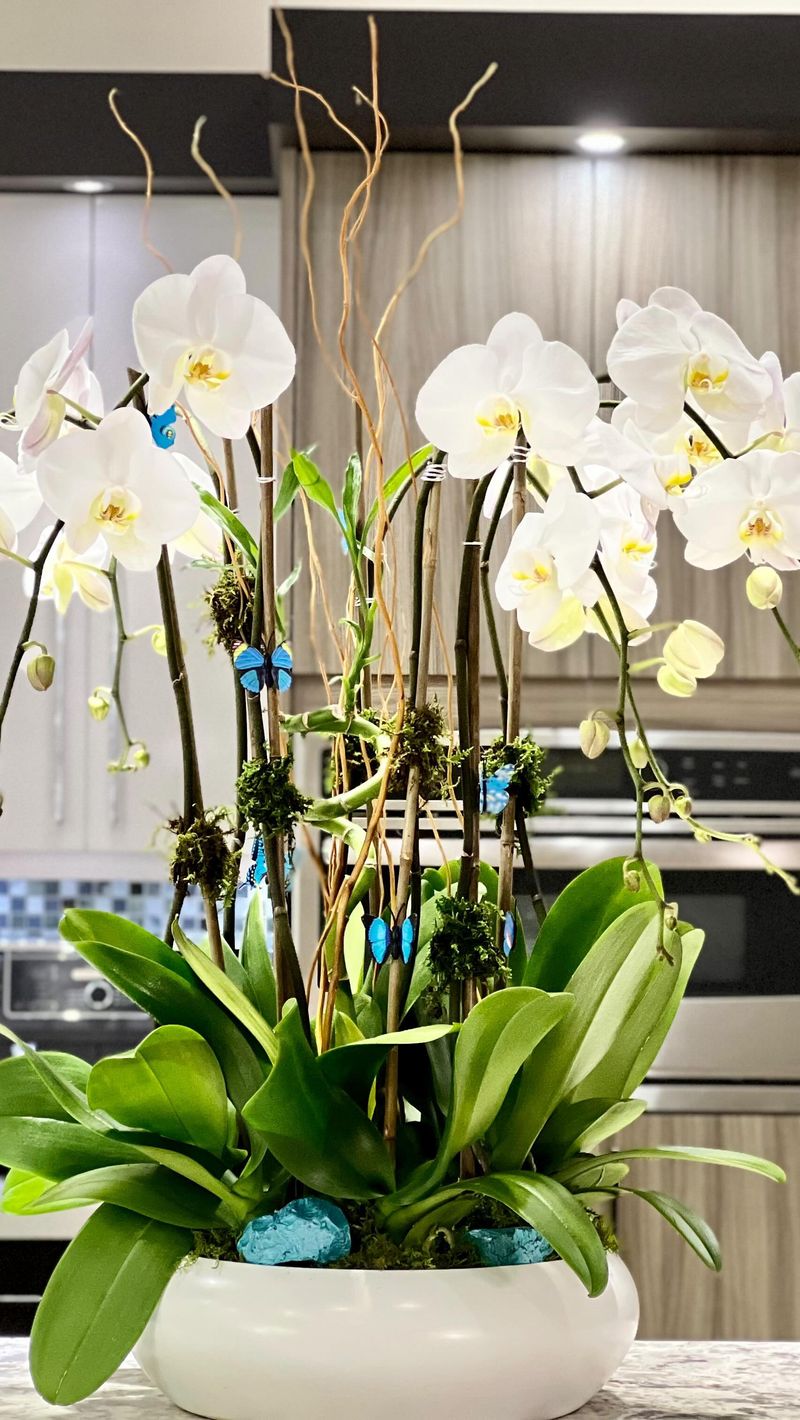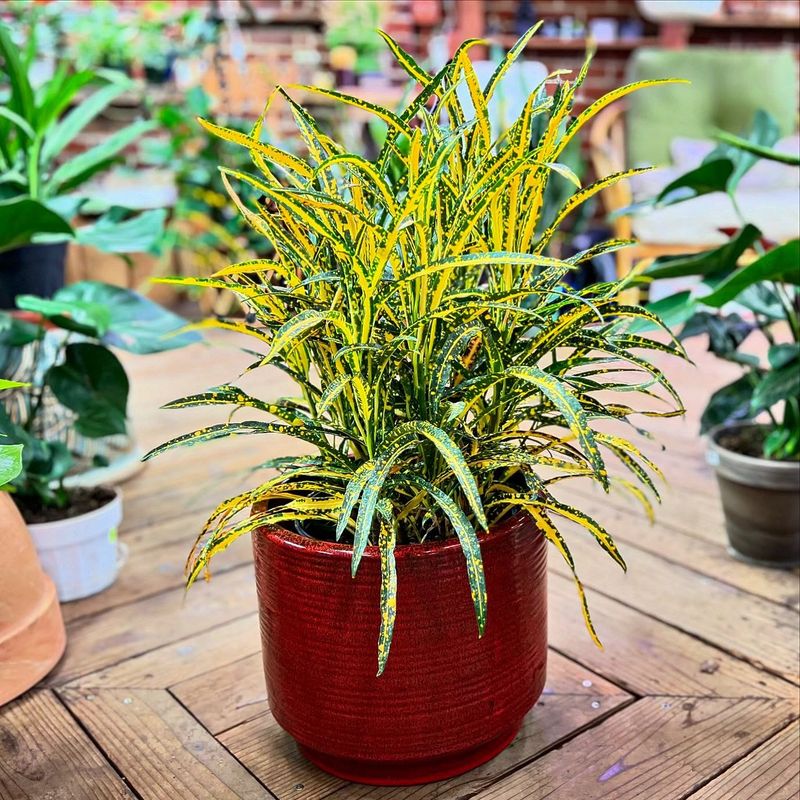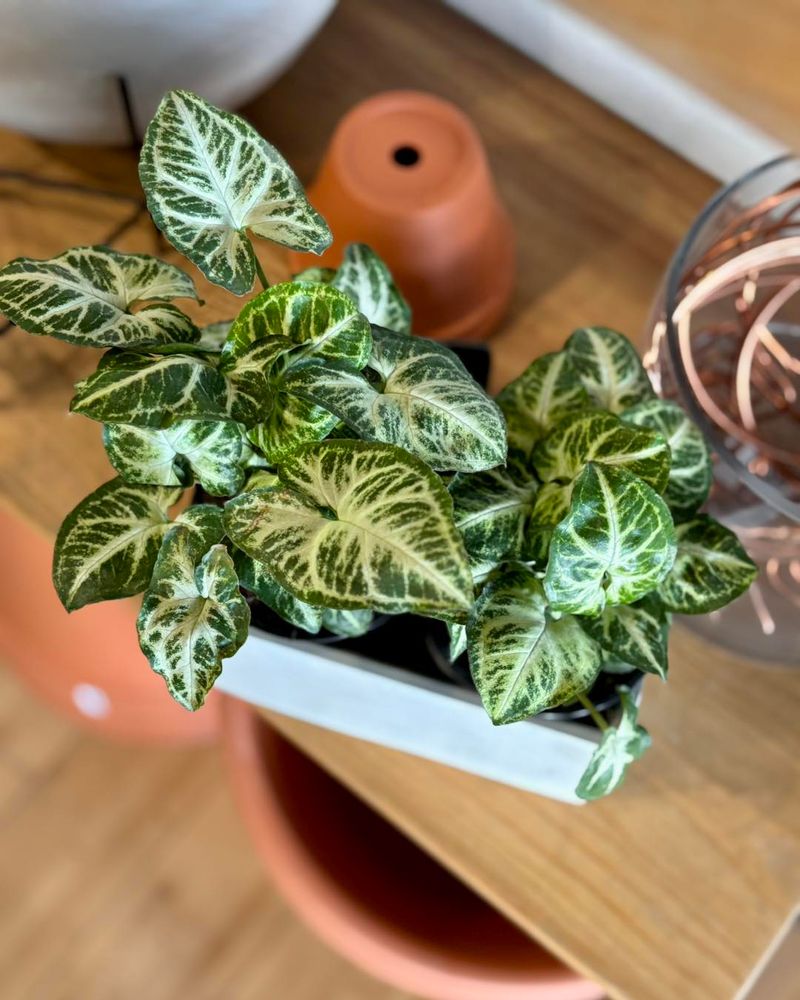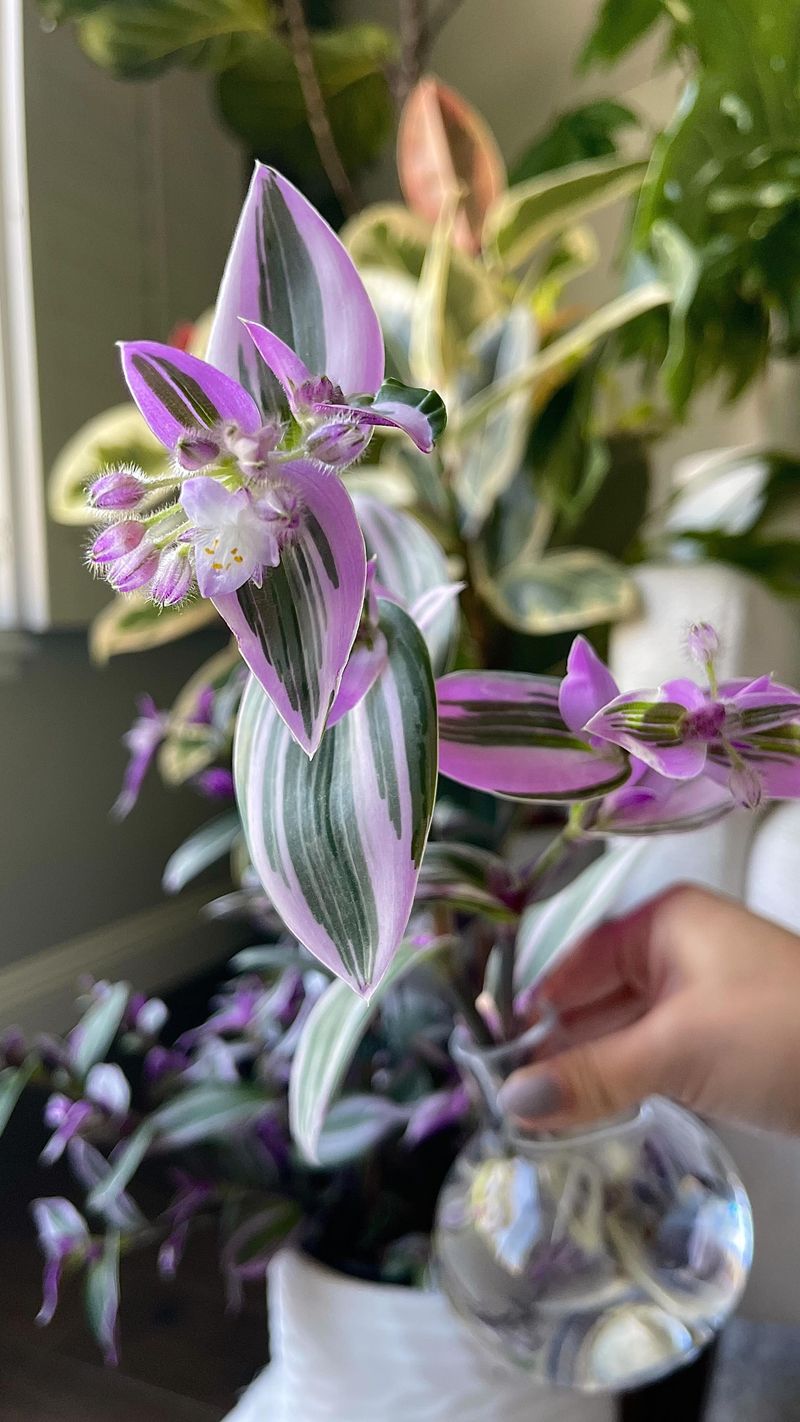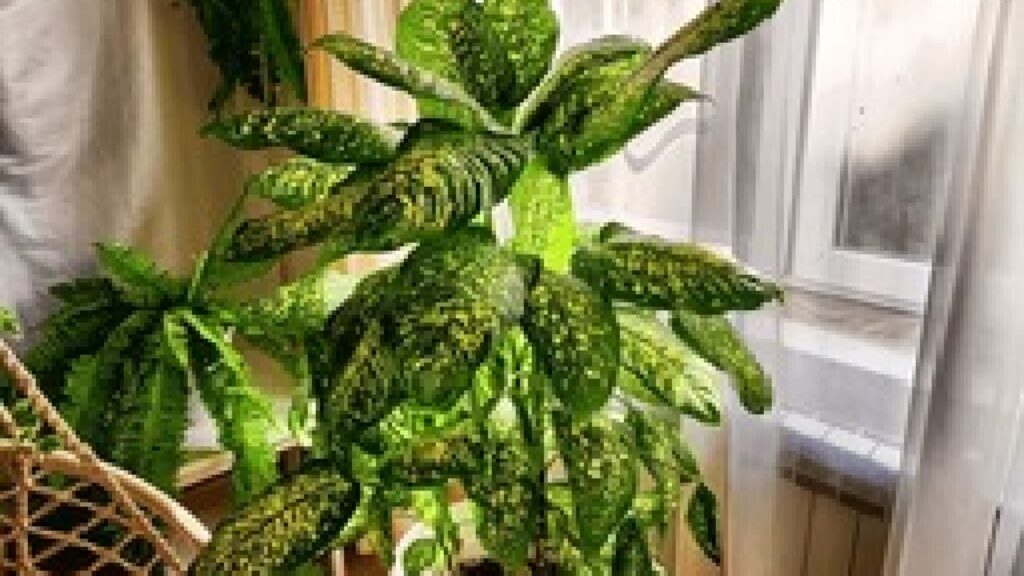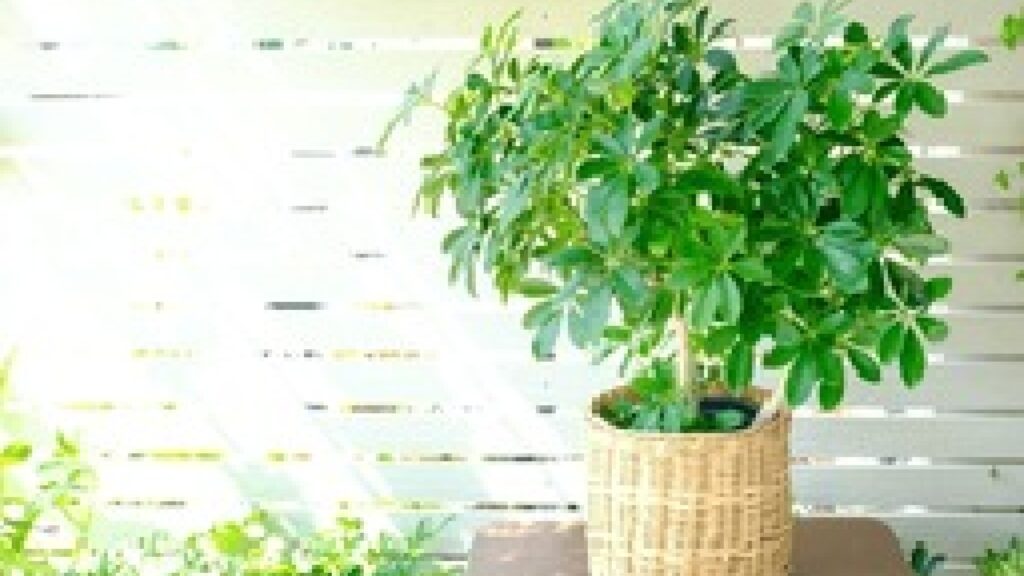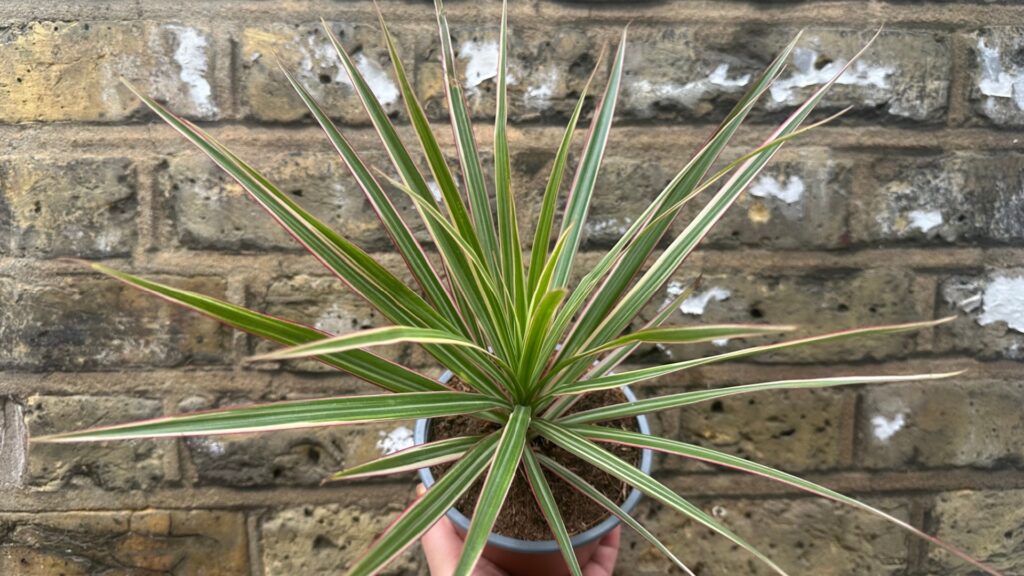Skip a repot and your plant might just throw in the trowel—wilt, wither, and wave the white flag.
Some houseplants live and die by fresh digs. Miss their repotting window, and it’s all downhill in a hanging basket.
These leafy divas are pickier than a cat at dinnertime—craving space, soil, and room to breathe. Keep up, and they’ll grow like gangbusters.
Don’t let them bite the botanical dust—meet the plants that must be repotted to stay lush, lively, and leafed out.
1. Peace Lily
Rapid growth makes these popular flowering plants demanding when it comes to pot space. Peace lilies develop extensive root systems that quickly fill containers, leading to drooping leaves despite adequate watering.
When rootbound, these beautiful plants stop producing their signature white blooms. Most peace lilies need repotting every 1-2 years, preferably in spring when growth is strongest. Watch for roots circling the bottom or poking through drainage holes – clear signals it’s time for a bigger home.
2. Spider Plant
Growing like nobody’s business, these hanging beauties create underground traffic jams in their pots. Spider plants develop thick, tuberous roots that expand rapidly and can actually crack plastic containers if ignored too long.
All those cute baby spiderettes take serious energy to produce! Repotting every 1-2 years keeps the mother plant healthy enough to keep reproducing. Look for slowed growth and fewer babies as warning signs your spider plant is crying out for more space before it’s too late.
3. Pothos
Deceptively easygoing, these trailing vines silently suffer when root-cramped. Pothos may seem indestructible, but their leaves turn yellow and growth stalls when roots have nowhere to go.
Many owners notice their once-lush vines becoming leggy with smaller leaves. This popular houseplant needs fresh soil every 1-2 years to maintain its vigor. The good news? Pothos isn’t picky about pot size – just an inch or two larger than the current container is perfect for continued healthy growth.
4. Fiddle Leaf Fig
Dramatic by nature, these trendy trees will throw serious tantrums when their roots feel squeezed. Fiddle leaf figs drop leaves, develop brown spots, and completely stall their growth when rootbound.
Unlike some forgiving houseplants, these divas need annual repotting during their first 3-4 years. Mature specimens can go 2-3 years between pot upgrades. Remember to only go up one pot size at a time – too much space can lead to overwatering issues and root rot in these finicky favorites.
5. Chinese Money Plant
Famous for producing cute baby plants, these pancake-shaped leaf producers need room to spread their wealth. Chinese money plants develop extensive root systems that quickly overtake small pots, leading to stunted growth and fewer of those distinctive round leaves.
Happy specimens pop out offsets regularly from their root system. Without enough space, this charming reproduction method stops completely. Most Pilea plants need fresh digs every spring to keep making those adorable babies and maintain their perky, upright growth habit.
6. Monstera Deliciosa
Growing at impressive speeds, these tropical celebrities develop massive root systems to match their dramatic foliage. Monsteras become visibly unhappy when cramped – new leaves emerge smaller and with fewer characteristic holes and splits.
Root congestion forces these plants to direct energy to survival rather than producing those Instagram-worthy leaves. Young specimens need yearly repotting, while mature plants can manage with fresh soil every two years. Their aerial roots offer clues – when they multiply and dive desperately into the soil, your Monstera is begging for more space.
7. Aloe Vera
Medicinal marvels that multiply rapidly, these succulents quickly outgrow their containers. Aloe plants produce numerous pups (baby plants) that compete for resources in the pot, eventually choking each other out if not separated.
Overcrowded aloes develop thin, weak leaves instead of the plump, gel-filled ones that make them so useful. Even without pups, mature plants need repotting every 2-3 years to refresh depleted soil. Watch for roots emerging from drainage holes or plants becoming top-heavy and tipping over – classic signs your aloe needs attention.
8. Snake Plant
Famously hard to kill, these architectural beauties still have their breaking point when it comes to cramped quarters. Snake plants grow primarily from rhizomes that expand horizontally, eventually pushing against pot walls with surprising force.
Extremely rootbound specimens can actually crack their containers! While these plants tolerate tight conditions better than most, they’ll stop growing and develop weak, floppy leaves when truly squeezed. Most snake plants need repotting every 2-4 years, when you notice the soil level rising as roots displace it.
9. Bird’s Nest Fern
Loving high humidity but hating wet feet creates a repotting challenge with these tropical beauties. Bird’s nest ferns develop extensive but delicate root systems that suffer when tightly packed, leading to browning frond tips and stunted growth.
Unlike some houseplants that tolerate being rootbound, these ferns decline rapidly when cramped. The central “nest” formation becomes distorted and new fronds emerge smaller and malformed. Most specimens need repotting every 2 years, ideally in spring just as new growth begins to unfurl.
10. Rubber Plant
Secretly aggressive growers, these glossy-leaved trees develop root systems as robust as their towering stems. Rubber plants can’t sustain their fast growth and large leaves when roots have nowhere to expand, resulting in leaf drop and permanently stunted specimens.
When rootbound, these plants stop producing the rich, dark foliage that makes them so appealing. Young rubber plants need yearly pot upgrades for the first 3-4 years. After reaching maturity, repotting every 2-3 years maintains their health and impressive stature.
11. Boston Fern
Lush fronds demand constant moisture and nutrients that depleted, compacted soil can’t provide. Boston ferns develop masses of fine roots that quickly fill pots, leading to dried-out frond tips and thinning growth despite regular watering.
Most people don’t realize these classic hanging plants need annual repotting to stay fluffy and full. Division during repotting keeps plants manageable and rejuvenates tired specimens. Watch for roots appearing at the soil surface or poking through basket liners – clear indicators your fern is desperate for fresh accommodations.
12. ZZ Plant
Underground potato-like rhizomes expand significantly as these low-light champions grow. ZZ plants develop bulbous root structures that eventually fill entire pots, leaving no room for soil or water retention.
Despite their reputation for thriving on neglect, severely rootbound specimens develop yellowing leaves and stop producing new growth. The pressure from expanding rhizomes can even crack decorative containers! Most ZZ plants need repotting every 2-3 years, when you notice the soil level rising as the rhizomes push upward.
13. African Violet
Petite but particular, these flowering favorites develop circle-shaped root systems that hug pot edges. African violets suffer when roots have nowhere to go, stopping flower production and developing smaller, distorted leaves.
Many owners mistake their declining blooms for light or watering issues when the real problem lies below the soil. These compact beauties need repotting annually, though often into the same size pot with fresh soil. Their shallow root systems prefer wider rather than deeper containers for optimal flowering.
14. Philodendron
Vigorous vines that never stop growing, these popular houseplants quickly exhaust their soil resources. Philodendrons develop extensive root systems that fill pots completely, causing smaller leaves and longer distances between nodes as they struggle for nutrients.
When rootbound, these tropical beauties lose their lush appearance and vibrant color. Both climbing and non-climbing varieties need repotting every 1-2 years to maintain their rapid growth rate. The good news? They’re incredibly resilient during the repotting process and bounce back quickly when given fresh soil and more space.
15. Calathea
Notorious for their diva-like care requirements, these prayer plants have another demand: fresh pots regularly. Calatheas develop fine, delicate root systems that quickly become compacted in old soil, leading to their signature leaf curling and browning edges.
Most owners blame low humidity for these symptoms when root congestion is often the real culprit. These tropical beauties need annual repotting to maintain their stunning foliage patterns and dramatic daily leaf movements. Spring is the ideal time, just as new growth begins to emerge.
16. Jade Plant
Developing into miniature trees over time, these succulent favorites need surprisingly frequent pot upgrades. Jade plants grow substantial woody trunks and branches that require equally substantial root systems for support and nutrients.
Top-heavy specimens in small pots frequently topple over, damaging precious growth. Despite their drought-tolerance, jades suffer when rootbound, developing shriveled leaves and brittle stems. Young plants need repotting annually, while mature specimens benefit from fresh soil and slightly larger containers every 2-3 years.
17. Orchid
Contrary to popular belief, these flowering epiphytes do need repotting despite not growing in traditional soil. Orchids gradually break down their bark or moss medium, creating a compacted mass that suffocates roots and harbors harmful bacteria.
Rootbound orchids stop blooming and develop wrinkled leaves despite regular watering. Most varieties need repotting every 1-2 years, ideally right after flowering. Fresh medium restores proper air circulation around roots – critical for these plants that naturally grow attached to trees rather than in ground soil.
18. Croton
Rainbow-colored foliage demands plenty of nutrients that depleted soil can’t provide. Crotons develop robust root systems that quickly fill their containers, causing their signature vibrant colors to fade and leaves to drop when cramped.
Most owners don’t realize these tropical showstoppers need repotting every spring to maintain their spectacular coloration. When rootbound, these plants become particularly susceptible to spider mites and other pests as their vigor declines. Their bright personalities return quickly when given fresh soil and a slightly larger pot.
19. Arrowhead Plant
Starting compact but quickly vining, these chameleon-like plants outgrow pots faster than expected. Arrowhead plants develop dense root systems that compete for limited pot space, resulting in smaller leaves with less distinctive variegation and color.
When rootbound, these adaptable plants stop producing the dramatic leaf shape changes that occur as they mature. Most specimens need repotting annually to maintain their vigorous growth and interesting leaf transformations. Their root systems can be surprisingly aggressive, often emerging from drainage holes as an unmistakable cry for more space.
20. Tradescantia
Colorful cascading stems grow at remarkable speeds, quickly filling pots with their root systems. Tradescantias (including varieties like Wandering Dude and Spiderwort) develop masses of fine white roots that deplete soil nutrients within months.
When pot-bound, these trailing beauties lose their vibrant purple, pink, or silver variegation. Stems become leggy with widely spaced leaves instead of the lush, full appearance that makes them popular. Most need repotting or propagation every 6-12 months to maintain their spectacular coloration and trailing habit.
21. Dieffenbachia
Also known as “Dumb Cane,” this bold foliage plant doesn’t stay silent when rootbound. Dieffenbachias grow quickly and develop thick, cane-like stems supported by an equally vigorous root system. When stuck in compacted soil, they begin dropping lower leaves, and new growth emerges smaller and pale.
Root congestion also increases their susceptibility to rot and fungal issues, especially in humid indoor environments. Repotting every 1-2 years keeps their striking patterned leaves healthy and vibrant. Watch for wilting despite proper watering—a key sign it’s time for a soil refresh and roomier container.
22. Schefflera (Umbrella Plant)
These leafy trees may look relaxed, but when their roots are boxed in, they quickly rebel. Scheffleras grow rapidly, and their woody stems depend on a healthy root system to support upright growth. Once rootbound, you’ll notice drooping leaves, leaf drop, and slowed growth, even with regular care.
Left too long, the plant becomes top-heavy and prone to tipping. Young plants should be repotted every 1-2 years, while older specimens do well with fresh soil and occasional root pruning. A little more space helps them stretch tall and lush—just like their tropical forest origins.
23. Streptocarpus (Cape Primrose)
Don’t be fooled by their dainty appearance—these floral charmers are sneaky fast growers beneath the surface. Streptocarpus, known for their extended blooming seasons, develop shallow yet wide-spreading root systems that quickly exhaust small containers.
When rootbound, they stop flowering altogether and begin to show limp leaves and faded color. Unlike some flowering plants, Cape Primroses thrive best when repotted annually in shallow pots with fresh, airy soil. Regular upgrades keep them blooming continuously and prevent their sensitive roots from suffocating in spent mix.
24. Prayer Plant (Maranta leuconeura)
Famous for their nightly leaf-folding ritual, these eye-catching plants have another quirk—they hate tight shoes. Prayer plants develop dense root systems that demand space to stretch, or they start sending distress signals in the form of yellowing, curling leaves.
Despite their compact look, these plants often need repotting every 12-18 months to maintain healthy root growth and leaf movement. Without fresh soil, they quickly lose their bold veining and begin to decline. Spring is the ideal time to offer them more legroom and rejuvenate their vivid foliage patterns.

